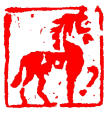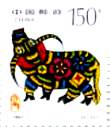 |
| The 12 Animals Representing Years |
 The mouse, or rat, is the first in the cycle of 12 animals representing years. The others are, chronologically, the ox, the tiger, the rabbit, the dragon, the snake, the horse, the goat, the monkey, the rooster, the dog and the pig. The mouse, or rat, is the first in the cycle of 12 animals representing years. The others are, chronologically, the ox, the tiger, the rabbit, the dragon, the snake, the horse, the goat, the monkey, the rooster, the dog and the pig.
How come animals designate years? Why 12, no less? And why these specific animals?
There are different explanations about their origin. A popular legend says, long long ago, a certain god ordered all the animals to pay him a visit on New Year’s Day, that is, the first day of the first lunar month. He said he would give the first 12 animals to come the title “King of the Animal World” and let each hold the title for one year. The 12 winners happened to be those mentioned above.
Another theory holds that the animals originated from the 28 constellations, or the Lunar Mansions, which are named after animals. Every two or three constellations stand for a year, and the most commonly known animal in each group was chosen for that year. Thus we have the 12 animals.
A more convincing theory maintains that using animals to symbolize years began from totems of minority peoples in ancient times. Different tribes had different animals as their totems. Gradually, these animals were used as a means to remember the year.
Alongside the increasing exchanges between the hinterland and the border regions, the custom of using animals to designate years made its way to the hinterland and was adopted by Han people, the largest national group in China.
 At that time, the Hans were using the 10 Heavenly Stems and the 12 Earthly Branches to designate years. They took one from each series to make a pair for one year and developed a system based on a 60-year cycle. Every 60 years it is back to square one and the cycle begins again. At that time, the Hans were using the 10 Heavenly Stems and the 12 Earthly Branches to designate years. They took one from each series to make a pair for one year and developed a system based on a 60-year cycle. Every 60 years it is back to square one and the cycle begins again.
When the method of using animals to represent years was introduced into the hinterland, the ancient Chinese married them to the 12 Earthly Branches, one to each. So 12 animals were used. And animals officially began to be used to designate years during the Later Han of the Five Dynasties Period a little more than 1,000 years ago. (to be continued)
|
|
|













